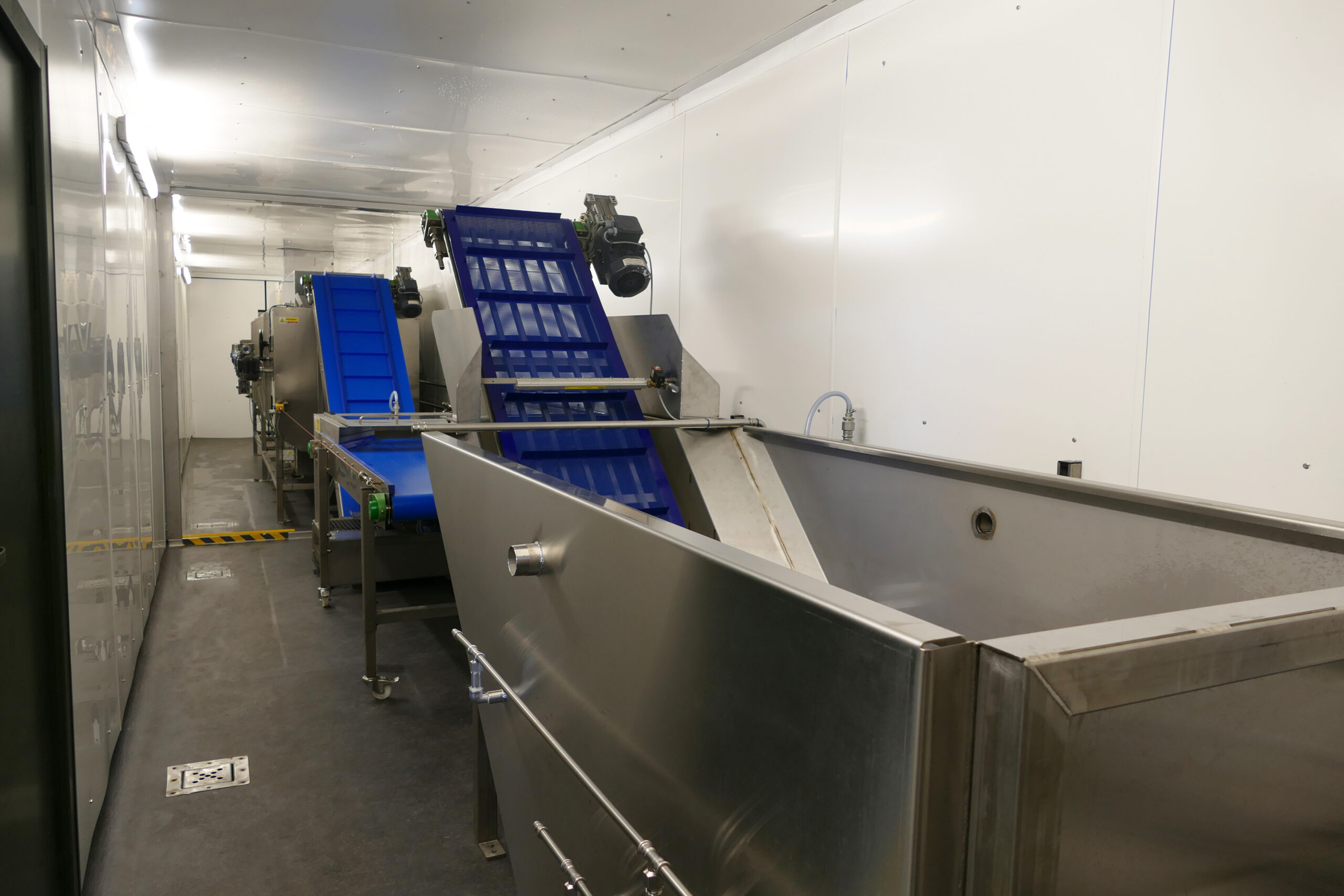
Last month, our customer Eco Cascade held a launch event at their facility to showcase the GlenFarrow Seaweed Processing Plant. Over 50 people, from growers of seaweed to seaweed entrepreneurs and product makers, came out to see the new facility at Kyle of Lochalsh – a village situated on the North West coast of Scotland.
The GlenFarrow Processing Plant is the first of its kind – allowing Eco Cascade to provide a full turnkey wash, chop and dry service to their customers. The day was a great success – the guests were invited to take a tour around the facility to see first-hand how the system works and operates to produce high-quality, dried seaweed.
What Alison, Managing Director of Eco Cascade, had to say about the plant:
“Our aim is to help the Scottish seaweed industry thrive, so being able to provide them with a multi-purpose seaweed processing facility we can really advance that cause and watch the industry grow. We found the installation process to be really efficient and very professional. The on-going service we have received from GlenFarrow has been exemplary.”
About the Seaweed Processing Plant
This new plant is a fully containerised system, all heated by a GF210 kW biomass boiler. The operation of the plant has five main stages:
Washing seaweed
At the beginning of the system, seaweed loads into the dump washer which has compressed air inlets to help release dirt from the product. The dump washer also includes CO2 ports for enhanced cleaning if required. The seaweed is carried by the conveyor belt to the next stage of the plant – the inspection belt. The conveyor belt is made of mesh material so water can easily drain off the seaweed. Water removal is also aided by an air knife above the belt to remove surface water from the seaweed.
Inspection
The seaweed gets carried along the inspection belt for the operator to check the seaweed and pick out any potential foreign objects before the product reaches the rotary valve. This section allows for two operatives to work comfortably.
Cutting seaweed
After inspection, seaweed then drops into the rotary chopper which is speed controlled depending on the size of seaweed that is required. The product then passes through the rotary valve down to the incline conveyor.
The rotary valve is extremely energy efficient compared to conventional chopping units on the market!
Dryer loading
A swan neck incline conveyor carries seaweed up to the dryer. The conveyor is cranked to ensure all products is picked up and has flights and sides to help keep seaweed on the belt.
Drying seaweed
As seaweed enters the dryer, the conveyor belt automatically starts to move once the correct depth has been achieved (which is all selected on the control panel screen). When they dryer is full the operator closes it and presses start – the drying processing will then continue until the selected drying programme has finished.
The drying process:
- The seaweed is agitated by moving backwards and forwards on the belt, and by rotary agitators moving the product left and right.
- Heat is provided by a GF210 biomass boiler*, which is used through a centrifugal high-pressure fan and a high output heat exchanger to deliver constant hot air for the drying process.
*We recommend using a GF210 biomass boiler as it is well suited for this system. It is able to produce ample heat for the dryer and uses sustainable, cost-effective fuel. However, this unit can run on oil, gas, LPG and electric if required.
For more information about our seaweed processing plants visit our page here or get in touch with us.